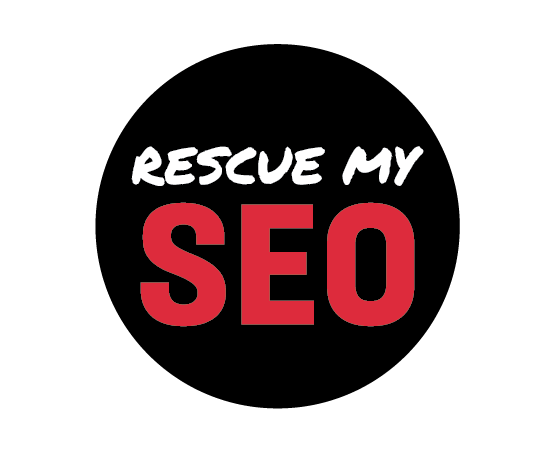
When your business grows across a city or region, creating a strong local SEO strategy for multiple locations becomes essential—but it’s also tricky. One of the biggest hurdles is avoiding duplicate content that can hold every location back from ranking. At Rescue My SEO, we’ve worked closely with local businesses across different industries and seen time and again that unique, location-focused content is the key to dominating local search in every market you serve.
Why Duplicate Content Hurts Multi-Location SEO
It might seem efficient to copy and tweak your service page for each location, but search engines are savvy. When they find nearly identical text across pages (with only city names changed), they struggle to determine which page is most relevant. The result: all your locations end up buried for key searches, and you lose out on valuable clicks and leads. Even worse, duplicate content may cause Google to filter some pages out entirely or only show one location when you actually have many to promote.
Our Local SEO Building Blocks for Multiple Locations
We’ve refined our process to keep every branch unique while making the most of your brand and resources. Here’s the step-by-step workflow Rescue My SEO uses and recommends for avoiding duplicate content while maximizing rankings:
1. Create Truly Unique Pages for Every Location
Each location deserves its own landing page, not just for SEO, but for your customers. Here’s how we structure them for maximum impact:
- Accurate NAP (Name, Address, Phone): Use precise details for each branch, exactly as listed in Google and local directories.
- Distinct business description: Reflect the neighborhood, major landmarks, the local team, and unique offerings. Avoid using the same intro text or boilerplate language across locations.
- Photos and staff details: Showcase your storefront, local employees, events, and the inside of each branch. Each location should feel like its own business to the searcher.
- Location-specific reviews: Feature testimonials from customers of that particular branch, never recycling the same ones across your site.
- Real local content: Discuss community partnerships, local news, or sponsorships. For example, did your branch sponsor a little league team or hold a food drive?
- Embed a Google Map: Place a map with the precise location and directions, further differentiating each page and supporting local search intent.
- Custom FAQs: Address questions unique to services or concerns in that area—for example, hours, neighborhood parking, or seasonal offers.
2. Keep the URL Structure Logical (and Search-Friendly)
Structure your URLs so both users and search engines know what each page is about. We recommend /locations/city-name/ (for example, /locations/pittsburgh). This approach offers:
- Clear signals for Google’s crawlers
- Easy navigation for your users
- Opportunities to naturally weave the city/town name into headings, SEO titles, and meta descriptions
3. Use Schema Markup to Boost Location Signals
Add LocalBusiness schema to every location page to help Google understand the entity, business type, and address. This enhances visibility for map packs and local intent searches. If you’re not sure how to do this, our technical SEO service can take care of it for you.
4. Optimize Google Business Profiles for Each Branch
Google Business Profile (GBP) is crucial for local SEO—especially with multiple locations. Here’s how we manage this for our clients:
- Create and verify a distinct profile for EACH address (and only that address)
- Use identical NAP info as your website for absolute consistency
- Add photos, business hours, and specific categories for each location
- Respond to reviews directly from the correct profile—never reuse responses across branches
- Leverage featured posts, deals, or updates that are location-specific (Learn how in our Google Business Profile Optimization guide)
5. Write Hyper-Local, Meaningful Content
Our best tip to avoid duplicate content? Treat every branch as its own hub of local expertise. Possible topics and sections we encourage:
- Stories about that location’s history or what makes it special in your market
- Specific seasonal problems or needs addressed (e.g., AC repair in hot cities, snow removal in the north)
- Showcasing local awards or press coverage unique to that branch
- Neighborhood guides, local partner mentions, or event recaps
- Pro tips or photo galleries from local staff (people love seeing real faces!)
Not sure how to get started with unique, SEO-driven content? Our SEO content writing service can help brainstorm and execute ideas tailored to your area.
6. Keep Your Citations and Listings Spotless
Citations (directory listings) work best for local SEO when they are accurate and consistent for every branch. Avoid mixing up addresses, phone numbers, or business names. Set a schedule to audit citations for duplicate or outdated entries several times a year, which can make or break rankings when you’re managing scale. If your locations change or you move, our guide to handling SEO moves and new locations has actionable steps.
7. Secure Local Backlinks and Reviews for Each Branch
Try to earn backlinks and reviews that specifically mention the location they relate to. Consider sponsoring events, supporting local causes, or pitching stories to community news outlets for each branch. For reviews, gently encourage happy customers to share their branch and staff experience. This layer of authenticity is hard for competitors to match and can solidify your spot in map packs.
8. Monitor, Audit, and Adjust
- Set up Google Analytics and Google Search Console to segment traffic and keyword performance by location page. This lets you see which areas are winning—and which need extra attention.
- Use rank tracking tools or services to monitor local map and organic rankings for each branch’s core keywords.
- Quarterly, audit URLs, meta data, and content for any accidental overlap. Prune or rewrite sections that are too similar.
- If you have 5+ branches, develop shared content guidelines for managers—standardize basics like NAP, but require original photos and descriptions for all else.
Our detailed Local SEO Audit guide covers every step for ongoing quality control.
What to Avoid: Duplicate Content Pitfalls
- Don’t just swap city names: If your only change on each page is the location keyword, it’s a red flag for both users and Google.
- No copy-paste testimonials: Assign user reviews and testimonials to the branch that actually earned them.
- Don’t use the same images everywhere: Personalized photos make every location trustworthy and real. Stock images are ok as secondary visuals, but never as the primary photo.
- Don’t neglect content length and depth: Thin, near-identical pages struggle to rank and fail to convert visitors.
For a reality check, see how we address and solve these risks in our in-depth guide on local SEO for multi-location businesses.
Sample Framework for a Winning Location Page
Here’s what we include on every client’s local landing page when scaling for more locations:
- Location Name and SEO Title: Use the service + city format (for example, “Plumbing Services in Cranberry Township”).
- Unique introduction: A welcome tailored to the area’s needs and history.
- Full address, open hours, phone number, and Google Maps embed
- About the local team—people actually working in that location.
- List of location-specific services or products
- Local testimonials and case spotlights
- Recent local events, sponsorships, or awards
- High-quality, original photos from the location
Every one of these elements helps create original, relevant content for both people and algorithms.
Getting Started: Actionable Checklist
- Audit all current location pages—flag any with copy-paste text or generic content.
- Draft or re-write every page with unique, hyper-local content and images.
- Claim and verify (or update) each branch’s Google Business Profile.
- Use correct, consistent NAP across all listings and directories.
- Add schema and Google Maps embed to every branch page.
- Gather real reviews for each location and feature them on dedicated pages.
- Monitor rankings and traffic by branch, optimizing further as needed.
Level Up: Advanced Tips for Scaling Multi-Location SEO
- Build unique resources or tools for each city’s page (for example, local service guides, event calendars, or cost calculators relevant to area customers).
- Launch hyper-local blog posts and news updates from each branch—share community involvement and proprietary data that competitors can’t copy. See our guide to building location pages that rank for more tips.
- Share locally-relevant offers and landing pages for seasonal campaigns or sponsorships.
- For multiple locations in a single city, review our specialized strategy guide.
Common Questions (and Our Honest Answers)
- What if I run out of unique things to say? Interview your team, poll your customers, and feature real local events. There’s always something unique about each neighborhood or client success story.
- How many words should each page be? There’s no hard rule, but we’ve found 400–600+ words per page (with rich local detail) is ideal—don’t pad it, but don’t be thin either.
- How do I track each location’s SEO? Segment your analytics (use UTM codes, unique phone numbers, or Google Business Profile insights). Set up goals and monitor calls/leads separately for every branch.
Final Thoughts
Creating a high-performing multi-location SEO strategy isn’t about finding shortcuts—it’s about investing a little extra attention so each branch is truly seen and valued. Put in the effort to give every location its own story, and you’ll see stronger rankings, more local leads, and a more resilient digital presence that rises above both competitors and Google’s ever-smarter algorithms.
If you’re ready to transform your multi-location SEO (without the headaches or penalties of duplicate content), we’d love to help. Start with a free audit or strategy session with Rescue My SEO and let’s make every location count on Google and beyond.



